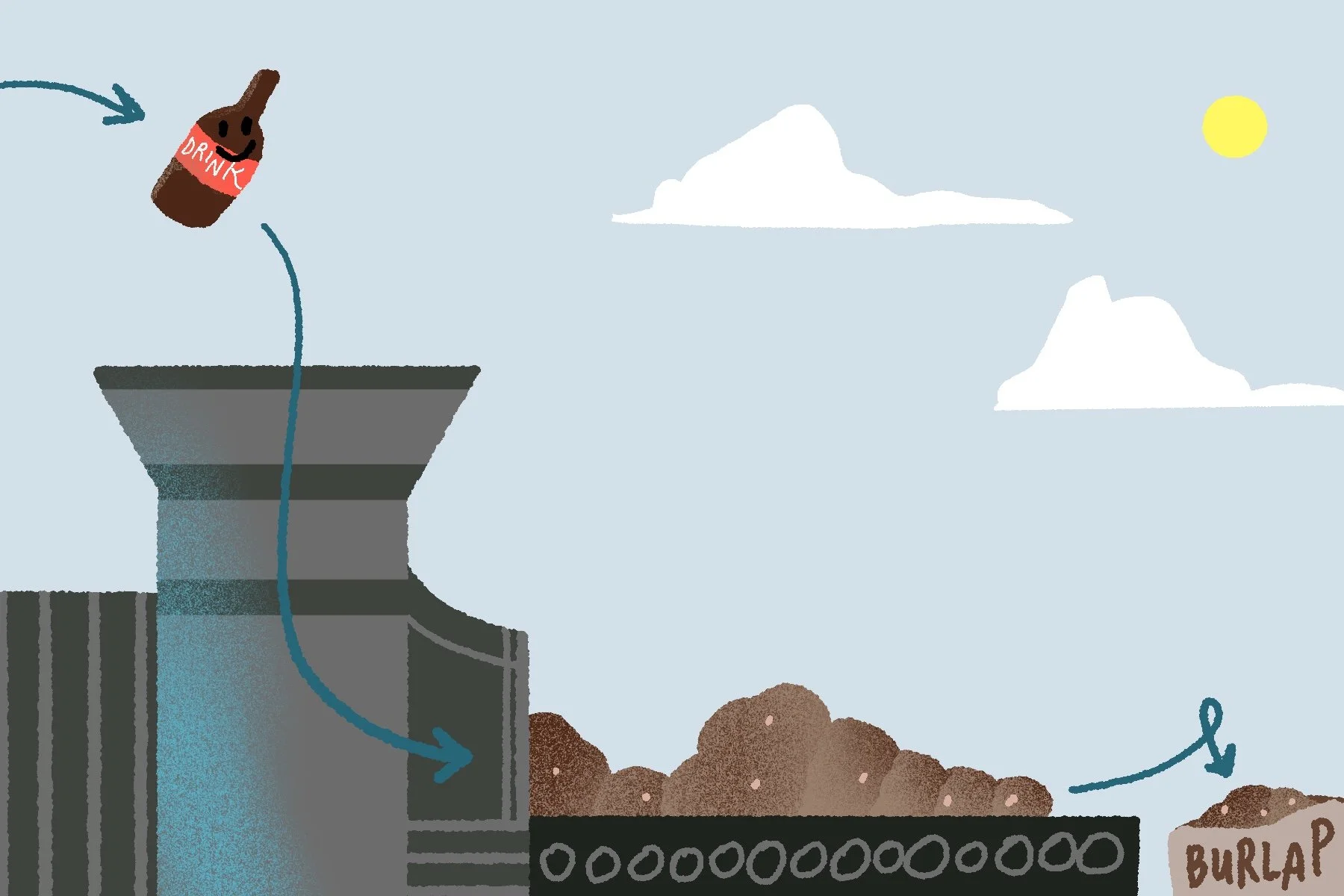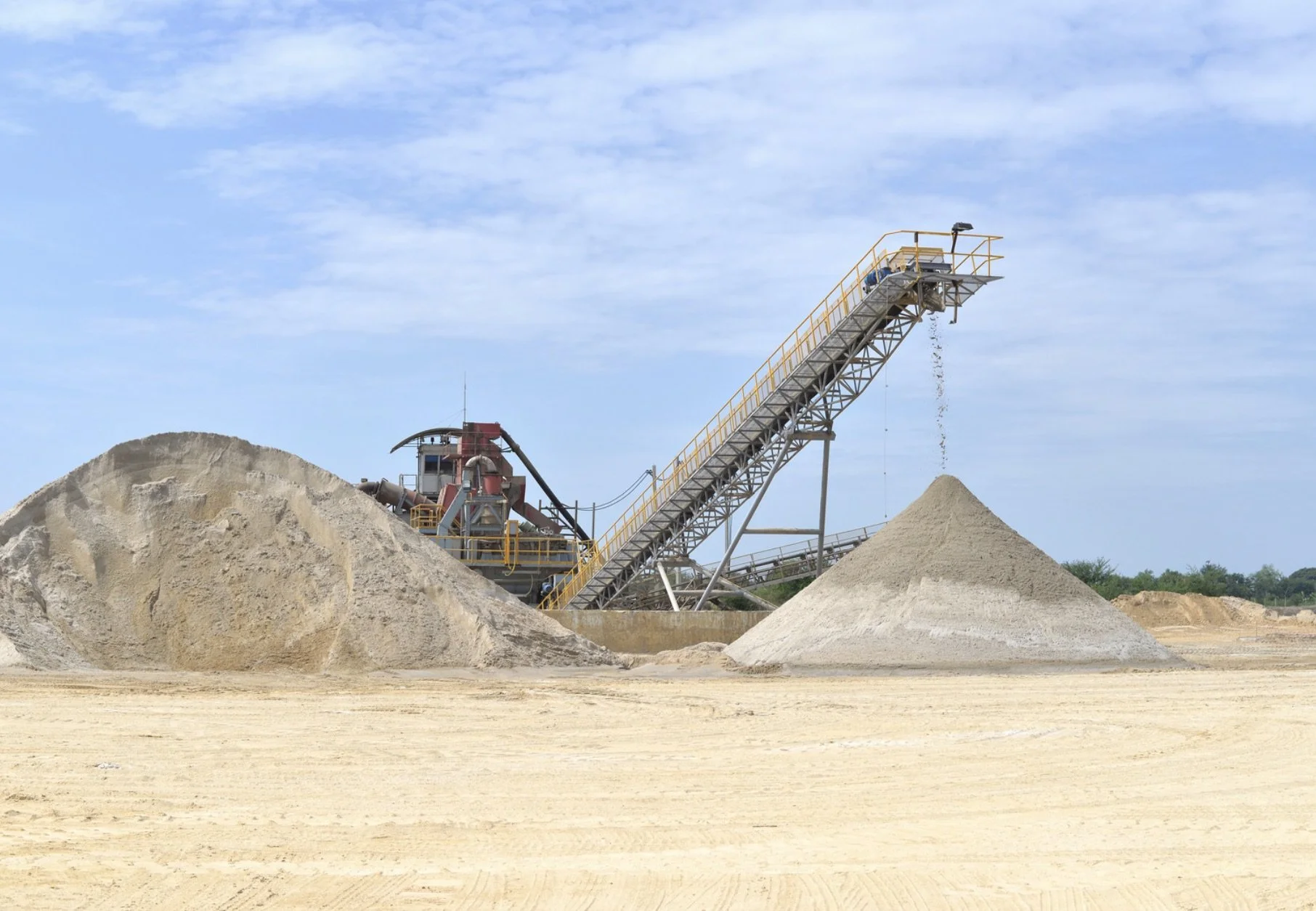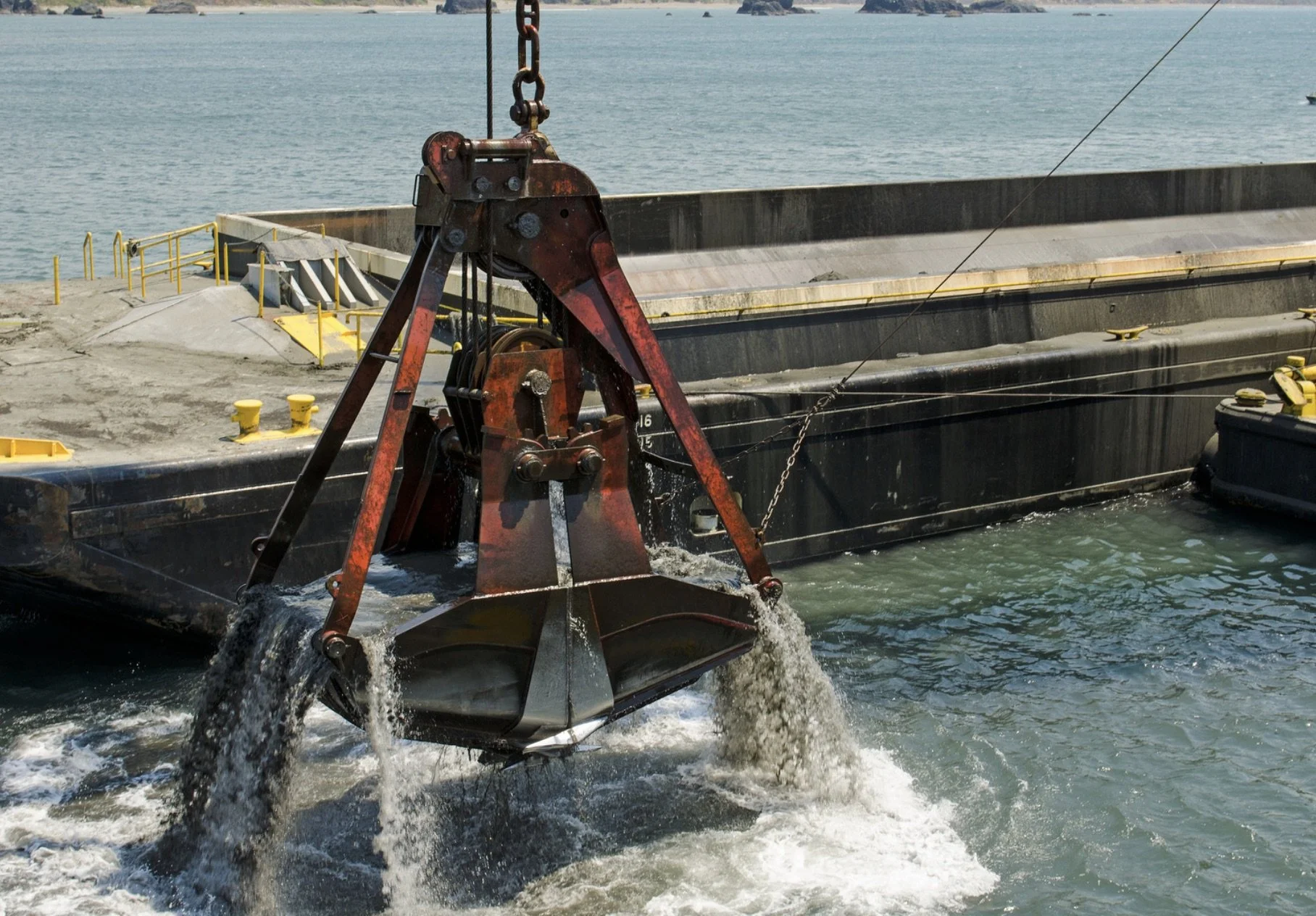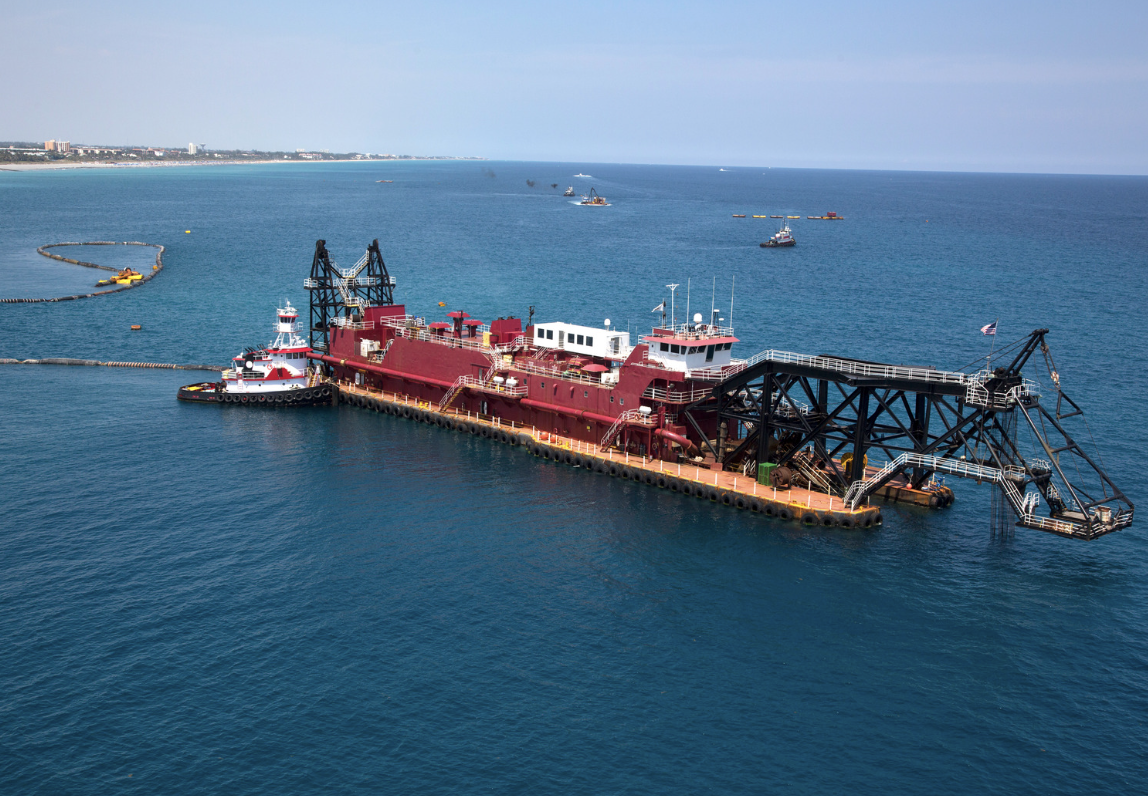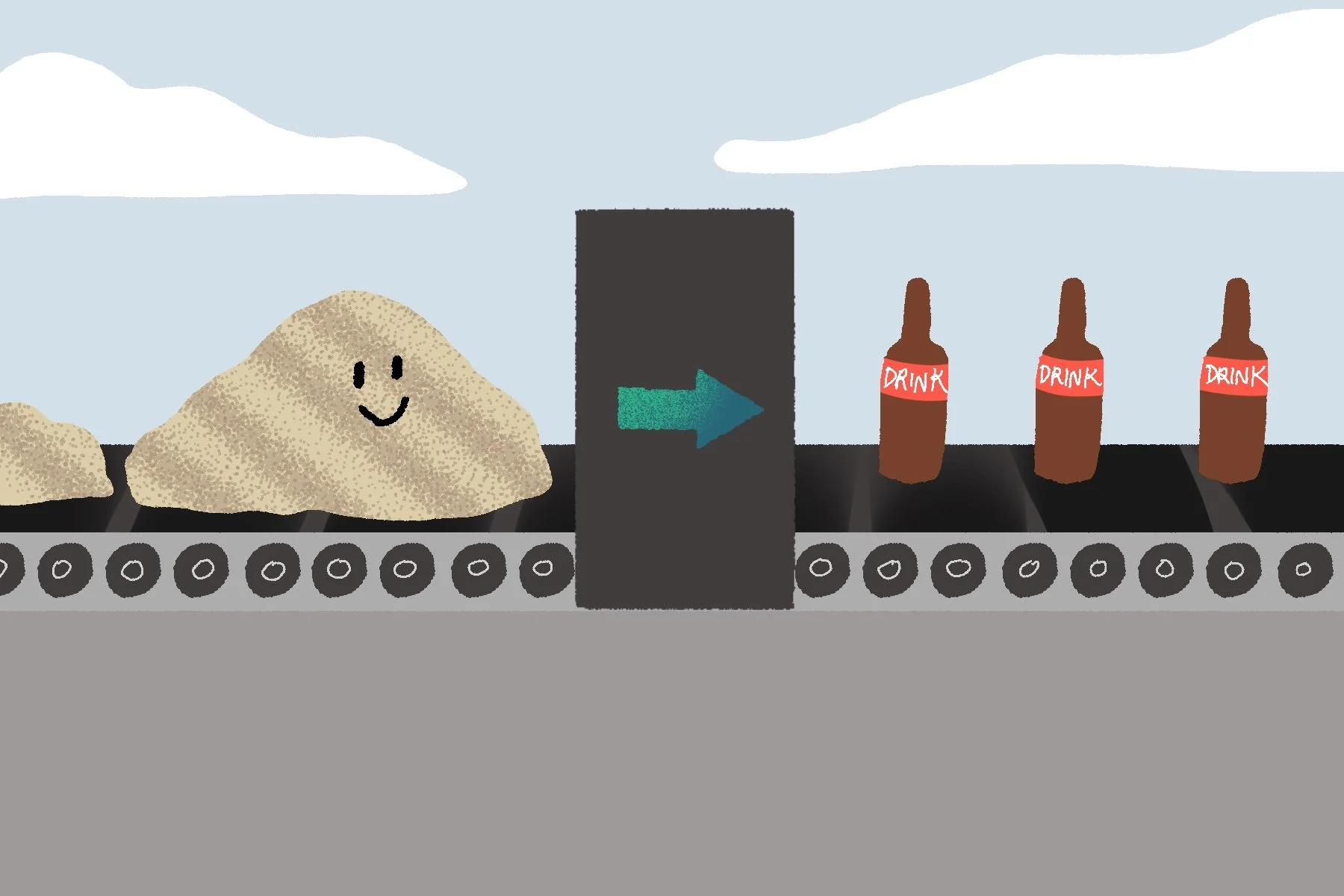
The Environmental Impacts of
Sand
SAND!
Sand has formed the foundation of our modern society. Sand is one of the most common materials found on the planet. But, just because it's common doesn't mean it's uninteresting! This exhibit will dive into the ways sand influences every aspect of our lives, from the structures that make up our cities to the technology that shapes our daily life.As we appreciate the incredible ways that sand empowers our world, we also need to confront the environmental challenges it poses. Our insatiable demand for sand has disrupted the delicate balance of nature.When you think about sand, what comes to mind? Maybe you played in sandboxes as a child or have memories of a family trip to the beach.“In every curving beach, in every grain of sand
there is the story of the earth.” -Rachel Carson
Humankind's first use of sand dates back to 7000 BCE, when people mixed sand and mud to make cement bricks. We've been improving their building skills ever since! Today, sand plays a vital role in construction and building, serving as the main ingredient in one of the most widely-used construction materials: concrete. Concrete is a mixture of sand, gravel, and cement. Concrete is the backbone of countless structures, from the humble dwellings built thousands of years ago to the towering skyscrapers built today.Beyond buildings, sand makes up 90% of asphalt used to build roads. Sand's unique granular properties make it perfect for strong, durable, and load-bearing structures. It is an irreplaceable resource in the world of construction.The Shanghai skyline, featuring the Shanghai Tower, the world's second-tallest building. Between the years 2011 and 2013, China used more concrete than the United States used in the whole 20th century!
The demand for sand, driven by rapid urbanization, infrastructure development, and the construction industry, has reached unsustainable levels.On top of the rising demand, the earth's natural methods of replenishing sands are being hindered. In rivers, sediments that would naturally replenish areas downstream are being blocked by dams And levees. On coasts, jetties and marinas prevent sediment flow.Sand mining is one of the most prevalent forms of mining in the world. In fact, it accounts for 85% of all mining activities!
Beyond environmental concerns, sand extraction is often entangled with corruption, organized crime, and the exploitation of children. In India, more than 400 lives were lost in incidents linked to sand mining between December 2020 and April 2022. In Kenya, students are being recruited to leave school and join mines.The demand for sand is increasing as our world evolves, but the negative environmental and human rights consequences of its extraction are also on the rise.This is a New Jersey sand mine in 1949. Sand mining is one of the most unregulated forms of mining, riddled with corruption and full of environmental hazard.
The Roman Forum, an ancient brick structure in Rome, Italy. Ancient Romans were using bricks as early as 64 CE.
Other than its uses in concrete and asphalt, sand is valuable in a number of other industries.For example, sand is a valued commodity in the oil industry for its uses in fracking. Sand is the main ingredient in glass. Silicon obtained from silicon-rich sands are the main component of the chips that power our computers, phones, and tablets. Fiberglass is developed from sand, insulating our homes and creating fiber-optic cables. Sand is used as an abrasive in toothpastes and cosmetics. What aspects of our lives doesn’t sand play a part in?“If you must speak ill of another, do not speak it,
write it in the sand near the water's edge.” - Napoleon Hill
Can we run out of sand?
The earth's sand is as numerous as... well, all the grains of sand! How can we be running out?Dredging is when equipment scoops sand up from the bottom of a body of water.
As the most readily-available stores of sand are being used up, we have found ourselves needing to dig deeper and venture farther for this precious resource. Our relentless need and pursuit of sand has profound environmental repercussions."Our lives are but specks of dust falling through the fingers of time.
Like sands of the hourglass, so are the days of our lives." - Socrates
Sand and the environment…
Dredging is the process of using suction or scoop-like devices to remove sand from the bottom of bodies of water.However, dredging has negative ecological consequences. It promotes coastal erosion, alters water pH, and increases water turbidity.To the left is a dredging barge in Florida. Most of the earth's desert sands are too smooth to be used in concrete, so most of the earth's concrete uses sand from water bodies or sand pits.The demand for sand is increasing as our world evolves, but the negative environmental and human rights consequences of its extraction are also on the rise.
How can we resolve this issue?
“At the end of the day, we can’t think about just sand in isolation. We have to look at sand as just one of many natural resources that we’re overconsuming, that we’re just using up way too much of, right? But the planet literally just doesn’t have enough stuff. So the only real long-term solution is we all have to find a way to live smaller, to consume less, to come up with a lifestyle that’s sustainable for 7 billion people.”
"All love that has not friendship for its base, is like a
mansion built upon the sand.” -Ella Wheeler Wilcox
The Life Cycle of Sand
See below to learn about how sand is formed!Let’s say we’re looking at molten rock that is brought above Earth’s surface through a volcano. It cools quickly and is left on the mountain side.As time passes, the rock is pounded by rain, wind, and other rocks. Or, if the sand has high silica content, like sand made from quartz, it can be melted into glass. This glass was blown into the shape of a bottle and filled with a drink.Finally, this burlap sack of recycled glass is used to build a berm to reinforce the coast. Bullrush, or other native swamp grasses are planted in it, too. After a bit of time, the burlap biodegrades, leaving just the sand wall protecting the coast.“The more sand has escaped from the hourglass of our life, the clearer we should see through it.” -Niccolo Machiavelli
The life of sand starts deep beneath the earth’s surface, with a glob of magma. When the magma gets away from the intense heat of the earth’s mantle and core, it begins cooling. Sometimes it stays beneath the earth’s surface, and cools there. Sometimes, it cools after being brought above the earth’s surface, maybe through a volcano. Slowly, it is cracked, broken, and made into a smaller rock. This process continues, until the rock has completely eroded away.It is now sand!Sometimes, when people need sand, they scoop it up from riverbeds. Some of the sand is mixed with cement, water, and gravel to make concrete. Now, it can be used to build a skyscraper. After someone buys and consumes the drink, the glass can be recycled. In this case, the bottle was recycled through Glassroots and crushed back into sand.The recycled sand can be used for many things: disaster relief, coastal restoration, construction, etc. This sand is being placed in a biodegradable burlap sack recycled from a local coffeehouse.



